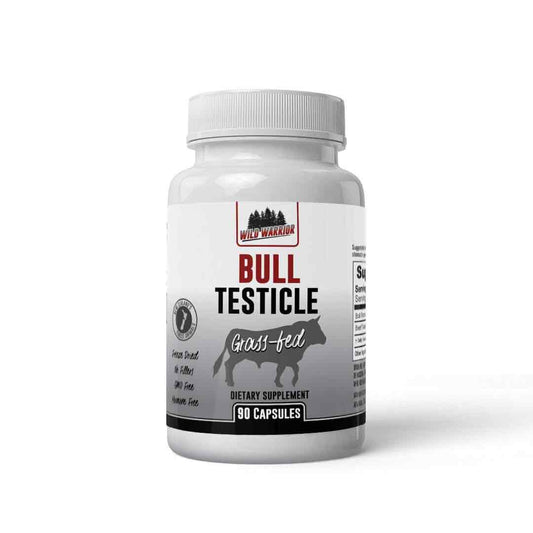The carnivore diet is like that ultra-aggressive friend who drags you to the gym after you’ve eaten an entire pizza. Sure, it has good intentions, but man, the adjustment period can be a little unpleasant. For a lot of folks starting out on the all-meat lifestyle, diarrhea is like an uninvited guest. It barges in, overstays its welcome, and leaves you wondering if you made a grave error by swearing off bread and broccoli.
Don’t worry. You’re not dying. You’re just experiencing what I like to call the "gastrointestinal initiation" of the carnivore diet. Trust me; we’ve all been there.
But why exactly does this happen? Why does eating steaks and bacon do to your plumbing what bad decisions do to your Saturday morning? And more importantly, how do you get through it without losing your mind (and all your electrolytes)?
The Science Behind It (No, Your Butt's Not Broken)
First off, understand this isn’t your body revolting against meat like some tofu-loving protester. It’s adaptation. You’re basically asking your gut microbiome to scrap years or decades of carb-heavy dining and remodel itself to process pure animal-based foods. Your digestive system is scrambling because it’s like, “Wait, where’s the bread? The popcorn? The fiber?! What am I even supposed to do with all this stuff?”
Here’s the breakdown (pun intended):
Fat Overload
Most people starting the carnivore diet suddenly quadruple their fat intake. If you’ve been feasting on boneless, skinless chicken breasts and now you’re inhaling ribeyes, your body isn’t producing enough bile to break down all that fat. The result? Slick, emergency sprints to the bathroom. (Sorry for the imagery, but you wanted to know, right?)
No More Fiber Buffer
You know how fiber in veggies and grains helps bulk up your stool? Well, that’s gone now. Without that cozy fiber net, the fat and protein are zipping through you like a greased pig at a county fair.
Gut Microbiome Drama
You’ve likely got a bunch of carb-loving bacteria in your gut that are now filing for unemployment. Those little guys thrived on your pasta and pancakes, and now that they’re starved, they’re doing a kamikaze act. It’s chaotic—but temporary.
Osmotic Load
Here’s a science-y term that just means this new diet is pulling extra water into your intestines as your body figures things out. More water = looser stools. It’s not cute, but it’s not forever.
How to Manage (and Survive) the Carnivore Cleanse
Okay, so now that you know why this is happening, what can you do to make those first few weeks a little less dreadful? Here are my tips, served with the kind of straight talk you came for.
1. Ease Into It (If You’re Not Already Waist-Deep in Beef Tallow)
If you’ve been binging on bagels for decades, maybe don’t go cold turkey (or cold ribeye, in this case). Start by gradually increasing your fat and protein intake over a week or two. Toss a steak on your plate next to those veggies until your body's prepared to go full carnivore.
2. Choose Leaner Cuts at First
If high-fat meats like ribeye are hitting you like a freight train, consider easing in with leaner cuts like sirloin, chicken, or fish. Work your way up to the fattier cuts once your gut catches up.
3. Small Portions, More Often
Instead of devouring a massive tomahawk steak in one sitting, try breaking your meals into smaller portions and spacing them out. It’s less overwhelming for your digestive system, and you’ll feel less like you’ve been hit by a meat meteor.
4. Prioritize Electrolytes
Diarrhea makes your body lose water and electrolytes faster than a bad hangover. Replenish with salt (yes, salt is your friend), potassium (hello, broth!), and magnesium. You’ll feel less drained, and your body will recover faster.
5. Give Your Gut Time to Adapt
I hate to break it to you, but there’s no miracle fix for this. Your body just needs time to adapt to its new meat-centric reality. Most people find the “carnivore cleanse” settles down after a week or two.
6. Stay Hydrated
This might seem obvious, but if you’re spending more time in the bathroom than the kitchen, drink water like it’s your part-time job. Dehydration will only make you feel worse.
7. Keep Your Sense of Humor
You know what’s worse than diarrhea? Diarrhea and a bad attitude. Laugh about it. After all, you’re eating steak and bacon every day. When’s the last time a diet felt this barbarically awesome?
The Silver Lining
Here’s the good news. Once you survive the “initiation phase,” most people find the carnivore diet smooths things out (pun intended… again). Your stool will regulate, your cravings for carbs will fade, and for many, their digestion actually improves.
There’s even evidence that ditching grains, sugars, and processed foods helps heal gut issues like IBS and improves symptoms of inflammation. But you’ve got to push through the layer of discomfort first. No guts, no glory, right?
Final Thoughts
Look, if the carnivore diet wasn’t worth it, people wouldn’t put up with the temporary gastrointestinal fireworks it sets off. Sure, transitioning to full meat mode might make you feel like you’re living in a bathroom stall for a hot minute, but the long-term benefits—from better digestion to increased mental clarity to primal satisfaction—make it all worthwhile.
You’ve got this. Steak on.





